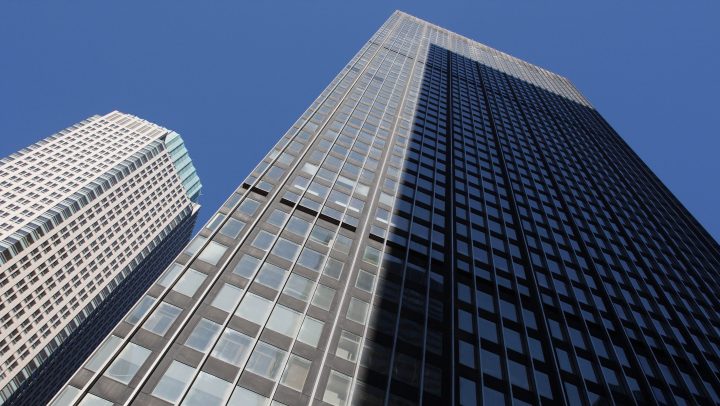
The history of “too big to fail”

During a hearing last month on the collapse of Silicon Valley Bank, U.S. Sen. Bob Menendez of New Jersey noted, “We have seen a flight from regional and community banks to quote-unquote ‘too big to fail’ banks.”
For many people today, the phrase “too big to fail” conjures images of the 2007-08 financial crisis, when the government injected about $443 billion into the banking sector. But the idea that the uncontrolled collapse of certain financial institutions could trigger widespread problems in the economy goes back much further in history.
Banking’s unique role in the economy
“We can trace back government interventions to specific financial institutions centuries back, all the way to the 1300s,” said Carola Frydman, professor of finance at Northwestern University. “That is a very old concept.”
In one early example, the Bank of Amsterdam, which has been described by Federal Reserve historians as the first central bank, offered emergency support to merchant lenders in the 1760s to prevent them from collapsing.
“After the Industrial Revolution, the role of financial institutions started to change, and we see them becoming much more intertwined with other actors in the economy,” Frydman said. “So the potential consequences of financial institutions failing [became] a lot larger.”
In the early 20th century, bank failures triggered and exacerbated financial crises in the United States. “Those failures have resulted in some very sort of hard-learned lessons,” said Eric Hilt, a professor of economic history at Wellesley College.
“It really should be ‘too essential to fail,’” said Kathleen Day, a lecturer at Johns Hopkins and author of a book about U.S financial crises. “Financial institutions have to do with credit and lending and safeguarding of people’s financial assets,” she said. “That has a domino effect.”
Though governments throughout history have recognized this unique power of financial institutions, the phrase “too big to fail” didn’t enter public policy debates until the 1980s.
Continental Illinois and “TBTF”
In 1984, a run on Continental Illinois National Bank and Trust Co. prompted the Federal Deposit Insurance Corp. to intervene. At the time, it was the largest bank failure in U.S. history.
“It has a lot of parallels with SVB,” said Frydman. Much like Silicon Valley Bank in 2023, Continental Illinois had a concentrated base of depositors, many of whom had deposits in excess of the FDIC’s insurance limit.
“It was large institutions depositing their money there,” Hilt said. “So when [the bank] began to realize losses on its loan portfolio, the depositors of Continental Illinois began to run on the bank.”
When the FDIC announced that it would support all of Continental Illinois’ depositors, including those with deposits greater than the FDIC’s $100,000 limit, it was controversial.
“The concern is something that we call moral hazard,” Frydman said. “If the banks know that they are going to be bailed out no matter what, they have incentives to take on more risk.”
The people involved in the Continental Illinois rescue package were called to Capitol Hill for a congressional hearing in the fall of 1984.
During that hearing, Congressman Stewart McKinney, a Republican from Connecticut, uttered the now well-known phrase: “We have a new kind of bank,” he said. “It is called too big to fail. TBTF, and it is a wonderful bank.”
McKinney was likely not the first person to use the phrase, but he is remembered for popularizing it.
At the end of 2022, the four biggest banks in the U.S. — JPMorgan Chase, Bank of America, Citigroup and Wells Fargo — held a combined $9 trillion in assets. That’s equivalent to about 35% of last year’s U.S. gross domestic product.
“The problem of ‘too big to fail’ is not one that’s easy to solve,” Hilt said.
Even after Continental Illinois in 1984 and the Dodd-Frank Act, which followed the crisis of 2008, financial regulators are still grappling with the systemic risks posed by big banks. Case in point: This month, the Federal Reserve Board plans to release a report on the supervision and regulation of Silicon Valley Bank.
“It is a constant race to try to figure out where the risks are in the system and to try to address them,” Frydman said.
“The time to really think about the too big to fail — what I like to call too essential to fail — issue is when the sun is shining,” Kathleen Day said. “But it’s hard to get people’s attention.”
There’s a lot happening in the world. Through it all, Marketplace is here for you.
You rely on Marketplace to break down the world’s events and tell you how it affects you in a fact-based, approachable way. We rely on your financial support to keep making that possible.
Your donation today powers the independent journalism that you rely on. For just $5/month, you can help sustain Marketplace so we can keep reporting on the things that matter to you.


















